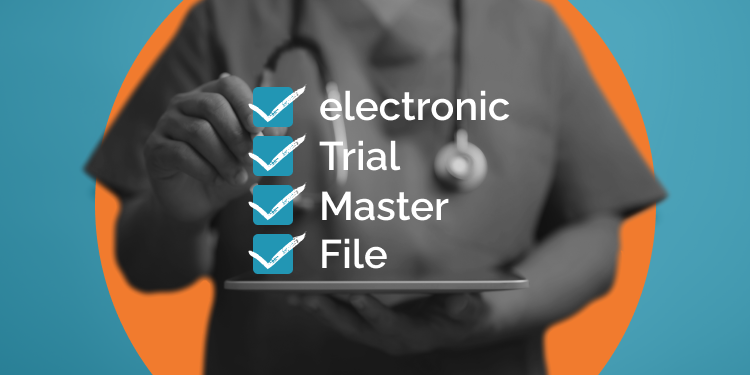- 1. What is GxP?
- 2. What is GMP?
- 3. What is GAMP?
- 4. What is CSV for GxP?
- 5. What is GCP?
- 6. What is GPvP?
- 7. What is GLP?
- 8. What is GDP?
- 9. What is GACP?
- 10. What is GDocP?
- 11. What is GtrP?
- 12. What is ALCOA+?
- 13. GxP and Quality Management Systems?
- 14. What does it take to be GxP compliant?
GxP refers to the ‘good practice’ guidelines and regulations created to ensure that food, medical devices, drugs and other life science products are safe, effective and usable.
The ‘X’ in GxP can refer to a number of disciplines - GMP (Good Manufacturing Practice), GDP (Good Distribution Practice), GLP (Good Laboratory Practice) and many more.
Together they define the various ways companies in regulated industries are required to control their processes, procedures, people and premises to ensure consistency and quality in their products.
Who defines and oversees GxP compliance in the Life Sciences industry?
The American Food and Drug Administration (FDA), the European Medicines Agency (EMA), the UK's Medicines and Healthcare Products Regulatory Agency (MHRA), as well as the International Organization for Standardization (ISO) all define and refer to GxP in their publications. These organisations, among others, promote, oversee and enforce their observation around the world.
Which sectors and companies need to adhere to GxP?
This guide will concentrate on GxP as it relates to:
- Medical Device Manufacturers
- In Vitro Medical Devices (IVD)
- Pharmaceuticals
- Life sciences
- Subcontracting suppliers
- Importers and distributors
The disciplines of GxP can also be relevant for those working in the following sectors:
- Agritech
- Food production
- Novel food production
- Medicinal Cannabis Producers
- Cosmetics
GxP is all about control
The GxP requirements outlined by the regulating bodies, ask businesses to formally define the protocol and controlled processes vital to the safety of their end products. For example,
- How products are consistently manufactured
- How new technologies are researched
- How product designs are tested and challenged
- How laboratory and manufacturing equipment is calibrated and maintained
- How their processes are traced from start to finish through controlled documentation
- How different kinds of products are stored and transported
- How their workers are trained
- How records of all these processes are captured and maintained to monitor the ongoing effectiveness of these systems
So, no matter what sector you operate in and the specific GxP standards that apply to you, you need the tools and quality systems to:
.webp?width=997&name=Document%20assess%20control%20record%20copy%20(1).webp)
Because these are the methods by which you will:
- Create high performing products of consistent quality in the most efficient way
- Minimise risk of product failure - proportional to its potential to harm
- Provide evidence that regulated products are in conformity with regulatory requirements
- Ensure knowledge is maintained in your organisation
- Establish a mechanism for communication in all levels of your company
- Achieve accountability across an organisation for regulated activity
Why is GxP compliance so important?
Due to the potential risk to human health of the products they oversee, the powers of the regulators in these sectors are far-reaching.
GxP compliance is monitored and enforced by agencies and government bodies through certification requirements, regular inspections and unannounced auditing.
In many cases the scope of the regulator’s remit continues to widen taking in new sectors and product categories. This reflects the extent of innovation in these industries, as well as cross-sector dependencies in the production techniques they use.
For this reason, regulators often require companies to verify and vouch for the GxP compliance of their partners throughout the supply chain.
As a result more and more companies are finding they need to adopt GxP - and prove they have adopted them - to protect their markets, supplier status and future business.
So, what are the specific areas of best practice which GxP covers?
GxP defines the best practices that cover every part of the life sciences industry and value chain.
But all GxP can be seen as subsets of Good Manufacturing Practice (GMP) - because they all feed into and support the safe production and delivery of regulated life science products.
GxP is about controlling the processes by which these products are developed, manufactured and handled in defined ways throughout the supply chain - ensuring they are of consistent quality and can be used as intended by consumers:
.webp?width=1024&name=Screenshot%202020-09-10%20at%2011.13.27%20(1).webp)
The central pillars of GxP
Documentation, Communication, Traceability and Accountability
To demonstrate that required controls have been observed and ensure potential non-conformance in end products can be identified and corrected - there must be accountability and traceability in data and documentation throughout the product lifecycle.
Data integrity is key
Knowing that data and documentation is accurate, up-to-date and accessible (and that they cannot be changed or tampered with) gives a high level of confidence to companies and regulators. It tells regulators that required activity has been undertaken and faithfully recorded by the right people at the right time.
Good Documentation Practices (GDocP) are central to all GxP
Underpinning all GxP, therefore, are the record-keeping and documentation requirements that keep processes trackable and companies fully accountable for the integrity of their data and the quality of their end products. This is referred to by the FDA and others as:
GdocP - Good Documentation Practice
It should be noted that GDocP is not a ‘standard’ in its own right, but is a key part of all the practices described above.
GxP: If it isn’t documented - it didn’t happen
To be compliant with GxP organisations need to specify, document and log every critical action made by every employee in the development, manufacture and delivery of a product or project by every employee. But they should do this in a way commensurate with the risk that non-conformance poses. And in a way that is ultimately auditable.
Quality Systems are needed to implement and validate GxP
To ensure all these required actions are understood and observed across an organisation, companies need Quality Management Systems to be in place. These Quality Management Systems need to:
- Qualify
- Control
- Record
all the key GXP processes, systems and procedures that ensure the safety of their end products.
Who needs a QMS?
Quality Management Systems are a ubiquitous requirement for operators in every part of the life science industry and supply chain. From farmers cultivating raw ingredients and researchers testing their safety in laboratory settings - to the manufacturers and distributors responsible for turning them into products and delivering them to end users.
The risks of non-compliance in GxP
The risks of non-compliance in life sciences GxP are many and varied, which is why these standards are codified and harmonised in regulated sectors as much as possible around the world.
Consequences of the breakdown of best practice include product failure, wasted time and resource. But at the more serious end of the scale they include serious physical harm to end users resulting in the revocation of licenses, major fines and even imprisonment for those with liability.
Inadequate documentation: a major factor in GxP non-compliance
Many of the fines and sanctions issued around non-compliance in GxP are as a result of inadequate and incomplete documentation. Data shows the FDA Observation Form 483 is most commonly issued because there is an absence of written procedures and CAPA processes are not adequately defined or followed. At the same time the MHRA in the UK cite insufficient or incomplete validation of computer systems and processes as a common reason for failed inspections.
Why training management is fundamental to GxP Compliance
Another central tenet of GxP is ensuring that your people are trained, competent, and accountable in the duties they are required to perform.
Whether it's GMP, GLP, GCP, or GDP, every discipline within GxP assumes that employees are suitably qualified to do their job and properly trained in the SoPs (Standard Operating Procedures) that they have to undertake.
Regulatory frameworks such as ISO 13485, FDA 21 CFR Part 11, and EU GMP repeatedly stress that training must not only be delivered, but also:
- Aligned to specific roles and proportional to associated risks
- Fully documented and readily auditable
- Measured for effectiveness
- Kept up to date through regular review and renewal
Despite this, many companies, particularly those experiencing growth or organisational change, struggle to manage their training effectively and keep their documentation up-to-date.
The use of third-party LMS (learning management systems) with certifications tracked through disconnected spreadsheets and manual email approvals often stands in the way of compliance and operational confidence.
Medical device developers, clinical trial companies and others working in the life-science sector, should develop their own Good Training Practices (GtrP) as part of their Quality Management System.

.webp?width=209&height=300&name=GxP-ebook-cover-lrg-300x430px%20(1).webp)
.webp?width=1441&name=5%20Ps%20(1).webp)
.webp?width=1253&name=V%20Model%20(1).webp)

.webp?width=800&name=cognidox-GxP-pp-img%20(1).webp)

.webp?width=231&height=300&name=pages%20shadow%20(1).webp)
.webp?width=1182&name=ALCOA+%20(1).webp)
.webp?width=1642&name=9%20ways%20(1).webp)



.webp)

%20(1).webp?width=133&height=76&name=ISO%20IEC%2027001%20(1)%20(1).webp)